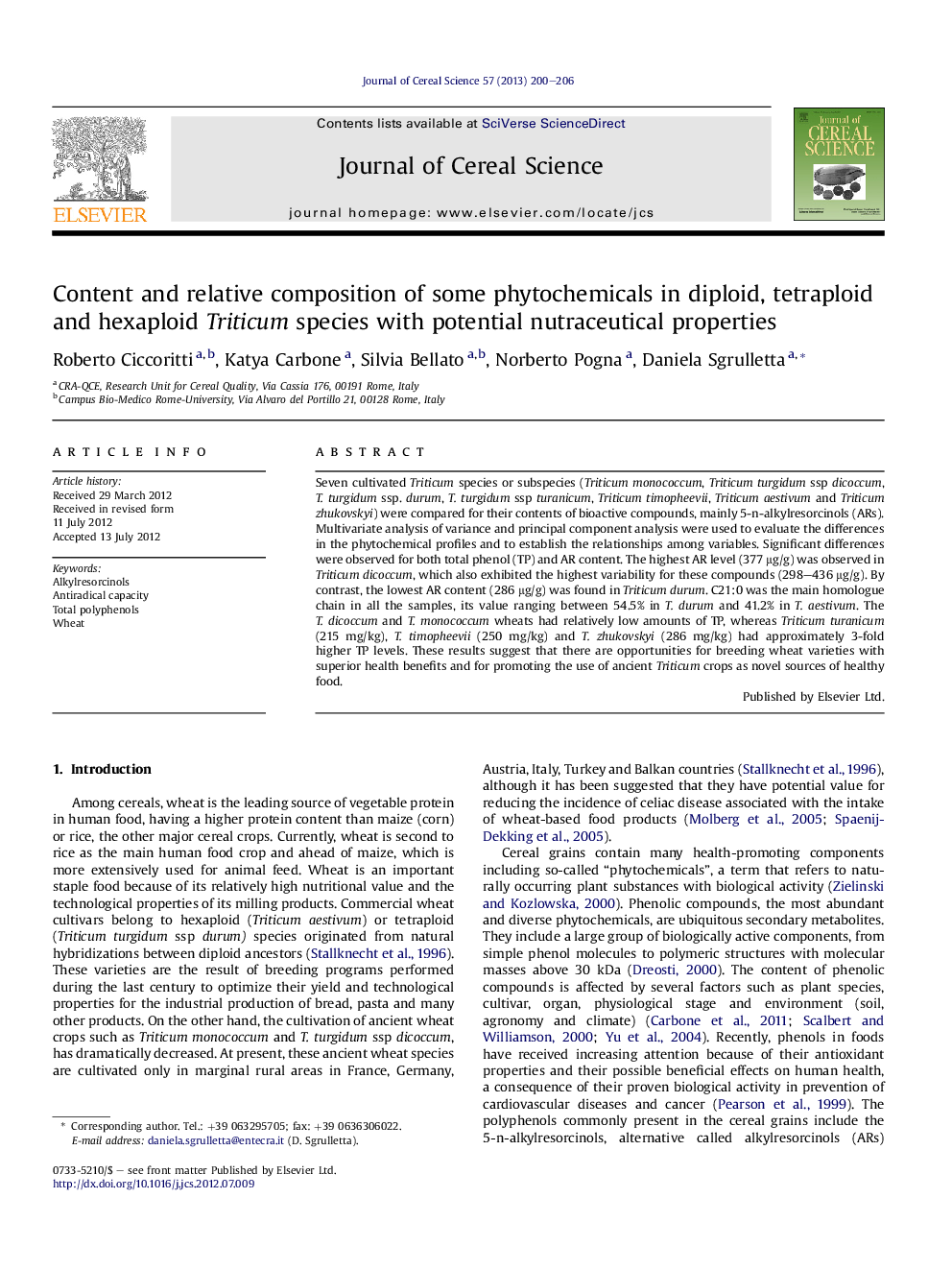| Article ID | Journal | Published Year | Pages | File Type |
|---|---|---|---|---|
| 4515825 | Journal of Cereal Science | 2013 | 7 Pages |
Seven cultivated Triticum species or subspecies (Triticum monococcum, Triticum turgidum ssp dicoccum, T. turgidum ssp. durum, T. turgidum ssp turanicum, Triticum timopheevii, Triticum aestivum and Triticum zhukovskyi) were compared for their contents of bioactive compounds, mainly 5-n-alkylresorcinols (ARs). Multivariate analysis of variance and principal component analysis were used to evaluate the differences in the phytochemical profiles and to establish the relationships among variables. Significant differences were observed for both total phenol (TP) and AR content. The highest AR level (377 μg/g) was observed in Triticum dicoccum, which also exhibited the highest variability for these compounds (298–436 μg/g). By contrast, the lowest AR content (286 μg/g) was found in Triticum durum. C21:0 was the main homologue chain in all the samples, its value ranging between 54.5% in T. durum and 41.2% in T. aestivum. The T. dicoccum and T. monococcum wheats had relatively low amounts of TP, whereas Triticum turanicum (215 mg/kg), T. timopheevii (250 mg/kg) and T. zhukovskyi (286 mg/kg) had approximately 3-fold higher TP levels. These results suggest that there are opportunities for breeding wheat varieties with superior health benefits and for promoting the use of ancient Triticum crops as novel sources of healthy food.
► A great variation in the phytochemical profiles amongst the ancient and modern wheat crops was underlined. ► C19:0 and C21:0 homologues are the molecules with the highest discriminating power. ► A wide variation in the AR composition in the cultivated Triticum species was evidenced. ► The ancient wheat crops exhibit unique nutraceutical properties for their peculiar contents in bioactive phytochemicals.
